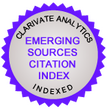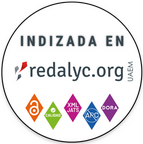A COMPARATIVE ANALYSIS BETWEEN THE WORLD CURRICULUM PROPOSED BY THE UN/UNCTAD/ISAR AND THE CURRICULUMS OF FEDERAL UNIVERSITIES IN MINAS GERAIS
DOI:
https://doi.org/10.13058/raep.2012.v13n1.101Keywords:
model Aaccounting curriculum, harmonization, menusAbstract
Currently, due to globalization, it is expected that an accountant be able to act beyond their national borders. For this to occur, this professional education should comply with the whims of the market. The United Nations (un), through its unctad (United Nations Conference on Trade and Development) and ISAR (International Standards of Accounting and Reporting), issued a model curriculum that can be used as a guide by all education institutions for accounting in developing their curricula. The objective of this research is to conduct a comparative study of the Model Accounting Curriculum (mc) developed by un/uncatd/isar against those adopted by universities in Minas Gerais, in order to quantitatively identify the level of similarity between the MC and the curricula analyzed. Four universities were selected: ufmg, ufsj, ufu and ufvjm, and their menus and curricula were compared with the contents proposed by the MC. It was found that, on average, 57.68% of the contents from the universities examined are similar to the curriculum proposed by the un/unctad/isar.A COMPARATIVE ANALYSIS BETWEEN THE WORLD CURRICULUM PROPOSED BY THE UN/UNCTAD/ISAR AND THECURRICULUMS OF FEDERAL UNIVERSITIES IN MINAS GERAISDownloads
Downloads
Published
How to Cite
Issue
Section
License
By publishing a manuscript in the journal Administração: Ensino e Pesquisa (RAEP), the authors declare that the work is of their exclusive authorship and therefore assume full responsibility for its content. The authors grant RAEP a non-exclusive rights license to use the work in the following ways:
(1) Sell and / or distribute the work in hard copies or electronic format.
(2) Distribute parts of the work as a whole to promote the journal through the internet and other digital and printed media.
(3) Record and reproduce the work in any format, including digital media.
Authors and readers are permitted to share the material, use it in classes, for presentations and also for other purposes, and to create new knowledge based on any RAEP publication, as long as the due credit is attributed to the original work and the respective author(s), through citations, references, and other means.
The journal adopts preventive measures to identify plagiarism using software designed for this purpose.
RAEP does not charge authors for the article submission nor for the publishing of approved articles.
In line with the journal's policies, each published article will be given a Creative Commons CC-BY 4.0 license.










